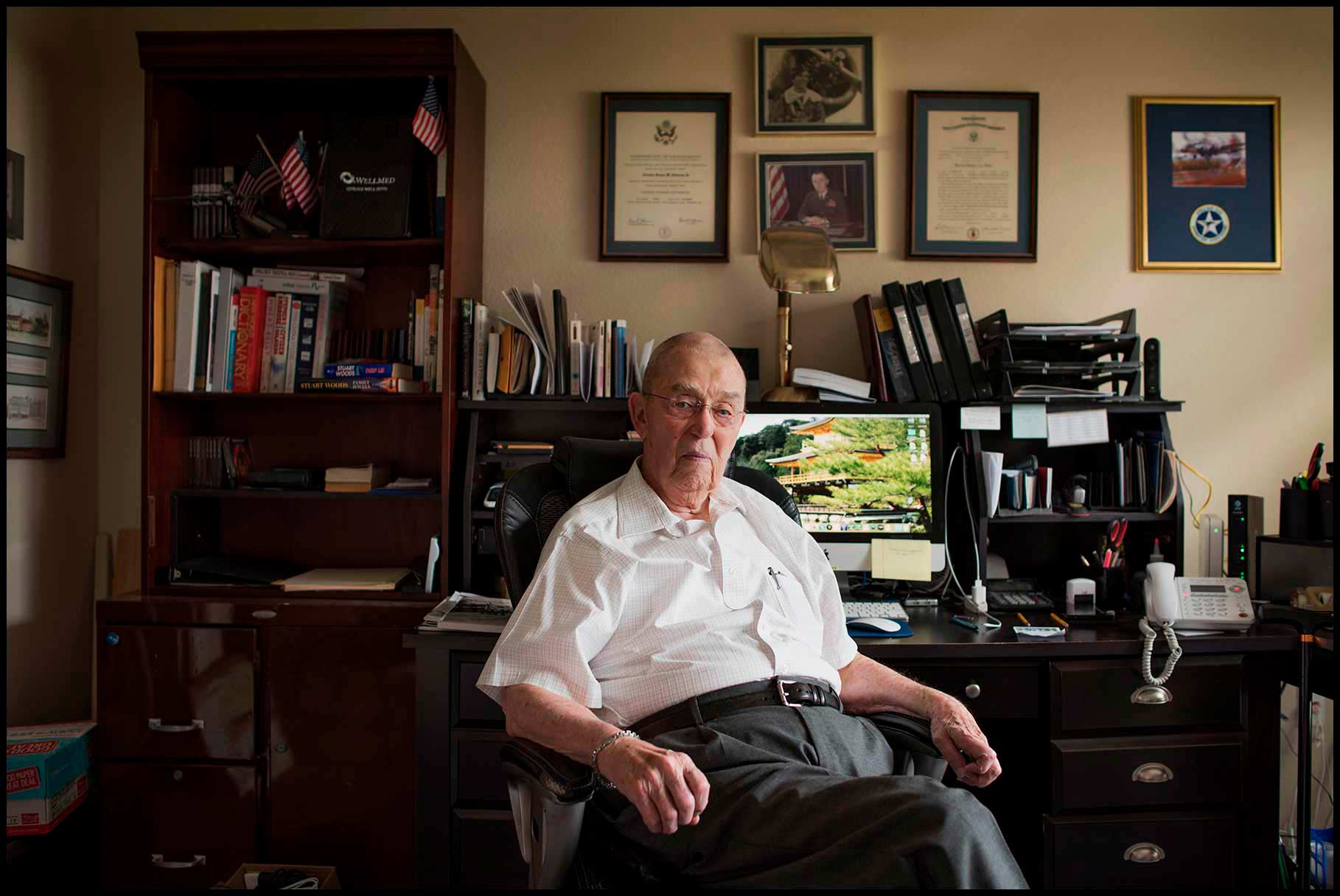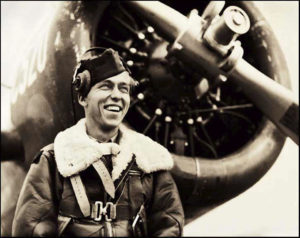
James Johnson
Flew 19 missions
in Europe
James Johnson
Colonel, U.S. Army Air Corps
1942–1976

Lt. Jim Johnson
Lockland, OH, 1944
As we approached Bastogne we ran into a preplanned defense. They killed my driver…. I remember sitting there in my seat holding my driver—he was 22 years old; Robert Garr.
I was born in Dayton, Nevada on the outskirts of Virginia City. I go back to Swedish immigrants crossing the plains. I had a grandfather who said he walked from St. Louis to Sacramento when he was 11 years old, following a wagon train. I graduated Reno High School in 1932 and went three years at the University of Nevada taking civil engineering. West Point ordered me to report for classes on the 1st of July. I graduated in 1939.
I was posted to various armored division units in the States. On December 7, 1941 we realized the bugle had blown and we were going to go somewhere. I was happy to be in the armored force because it was something new and interesting. In November, 1943, we sailed to England which was crowded until D-Day. We trained in England on the artillery range and developed an order of march for tanks—two columns of 17 tanks, 5-10 miles apart.
We crossed the Channel on September 2, 1944. There was little use of armored units in France because of the hedgerows and irrigation ditches which restricted maneuvering. We didn’t see action until the 16th of December when the Germans pulled the Battle of the Bulge. We moved forward and met the enemy in Belgium. We fought the Battle of the Bulge and it was cold. I had never seen anything like it.
On two, or possibly three occasions I was in a column where Patton was either the commander or the overall commander of all the units. One time when I was commanding the advanced elements, he called me on the radio and said, ‘Johnson, what the hell is holding you up?’ I said, ‘We ran into five rather modern-looking tanks. Our ammunition is just bouncing off the front of them. We’ve solved the problem by running around them and hitting them in the rear where they’re thin.’ He laughed and said, ‘Well get going.’ Yes sir.
After Bastogne, we got to the Rhine north of Frankfurt. We thought we would meet the Russians, but it didn’t work out. We were diverted south along the southern border of Czechoslovakia and ended up in Linz, Austria. We were there when the war ended.
In August I got orders to the Army War College in Leavenworth, Kansas. I stayed there a year. I married my first wife in 1940; we had two daughters. Our marriage didn’t last the war. When I returned, she wanted a divorce. I made colonel in 1953 and got orders to Ankara, Turkey where I got a beautiful Arabian mare.
I had no assignment other than armored division. Between 1953-1969, I spent three other years in Germany. In 1965 I was in Vietnam for 13 months as Westmoreland’s G-3 Operations Officer. I issued all combat orders and any training to be conducted. I got out in 1969. I was 54. Next day I went north of town to St. Mary’s Hall and became a teacher of math and physics. I taught 15 years.
I am definitely proud I served. I was very fortunate. I was never wounded—not even a scratch. As we approached Bastogne we ran into a preplanned defense. They killed my driver and my radio operator and they hit my half-track in places. Fortunately, the armored plate kept me from getting hit. I remember sitting there in my seat holding my driver—he was 22 years old; Robert Garr.
I married my second wife in Ankara, Turkey in 1948. We were married 61 years. I’m 102 now. {07-28-2017 • San Antonio, TX}